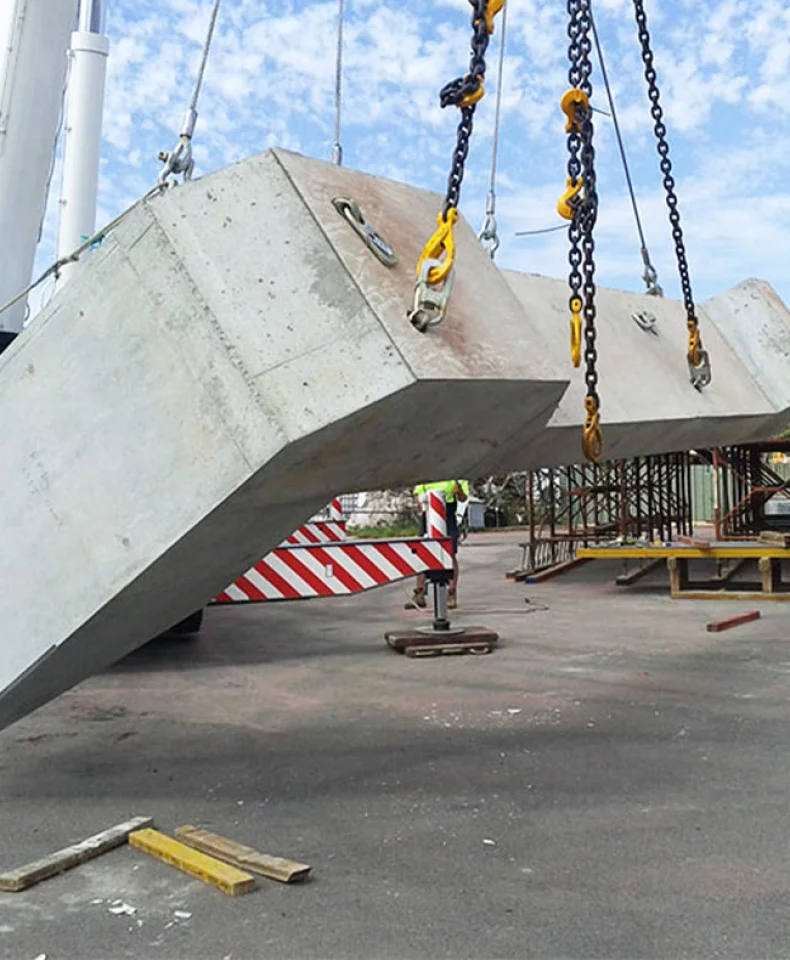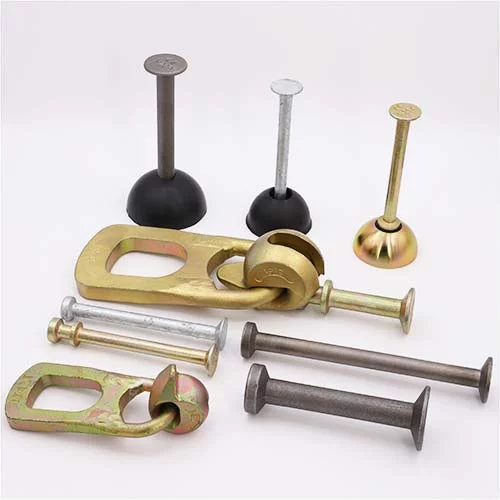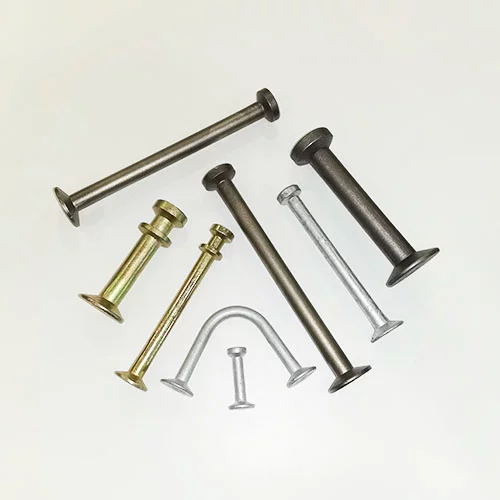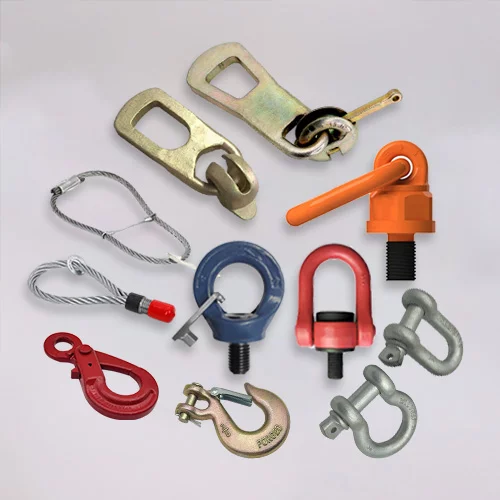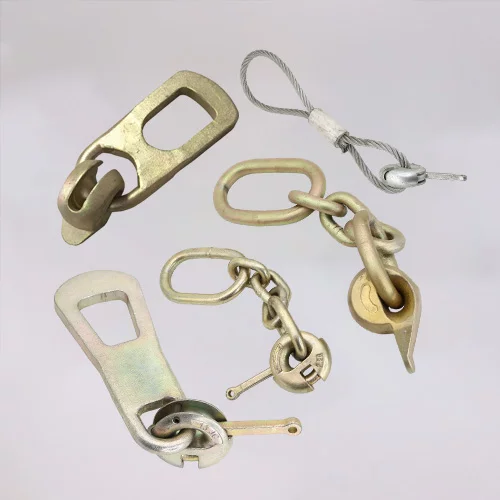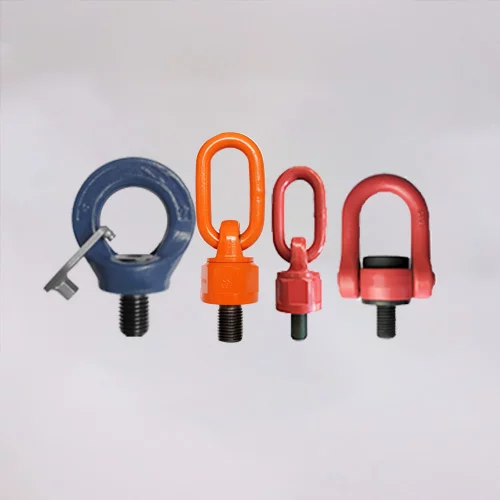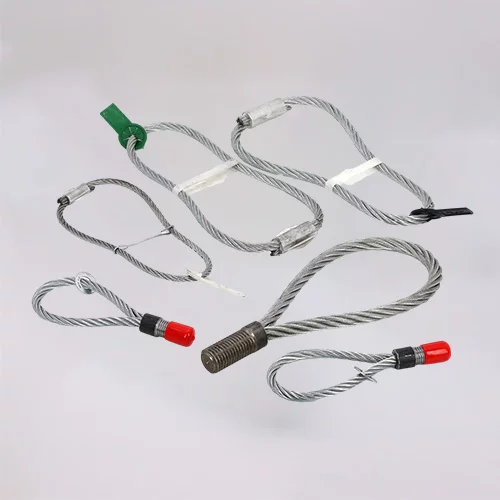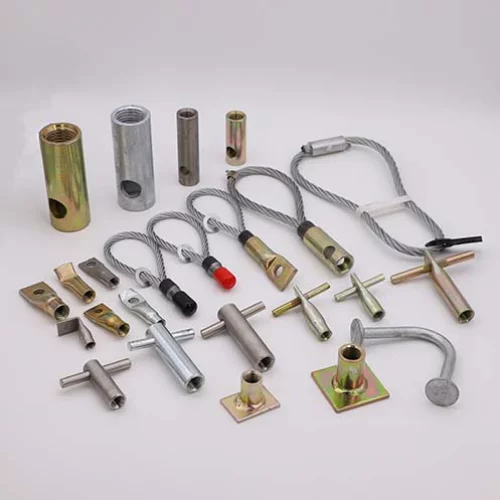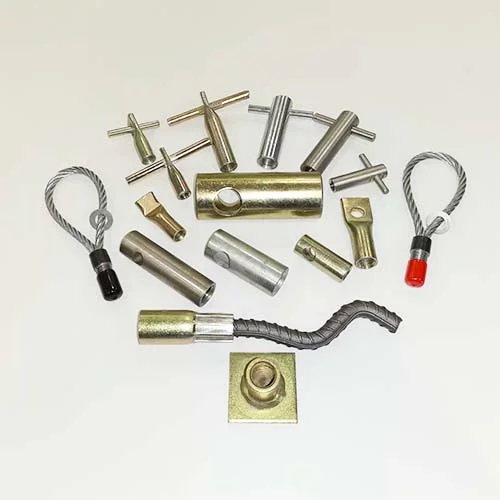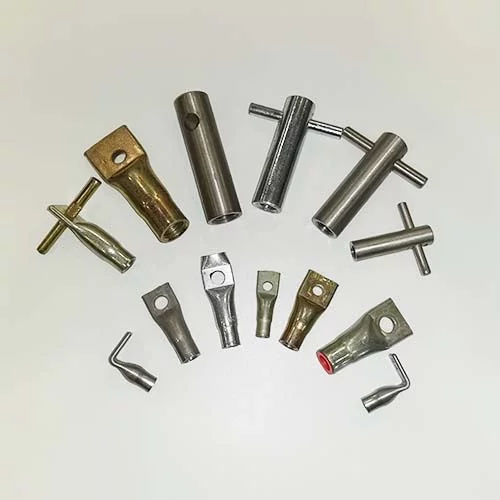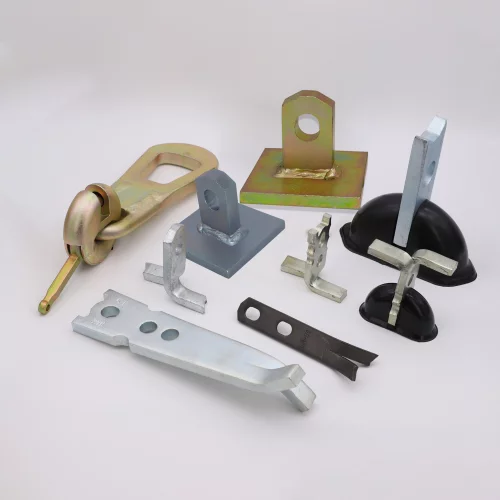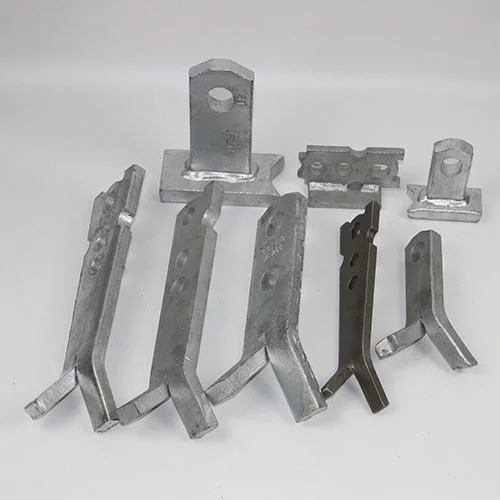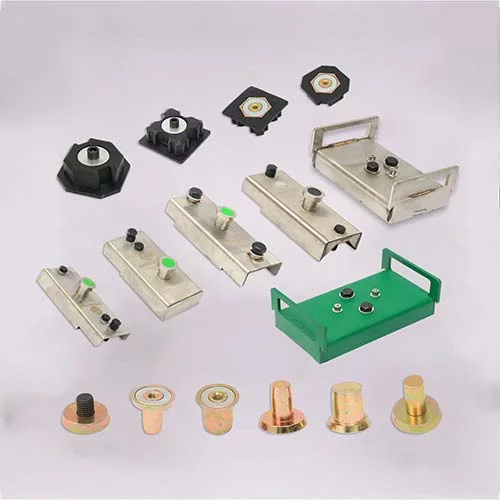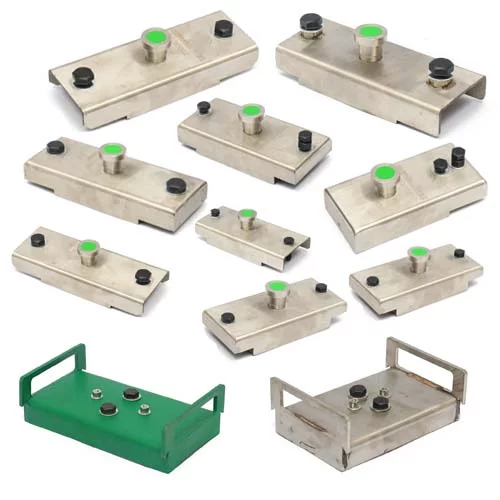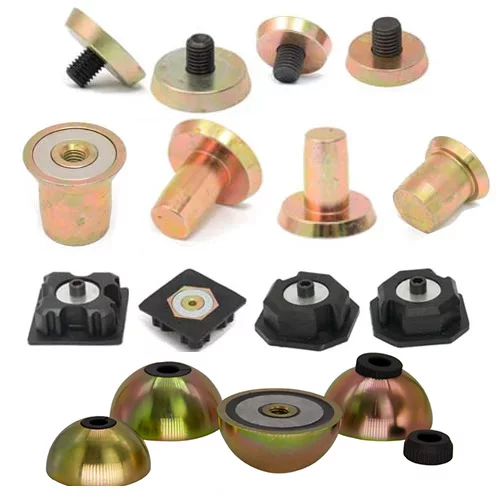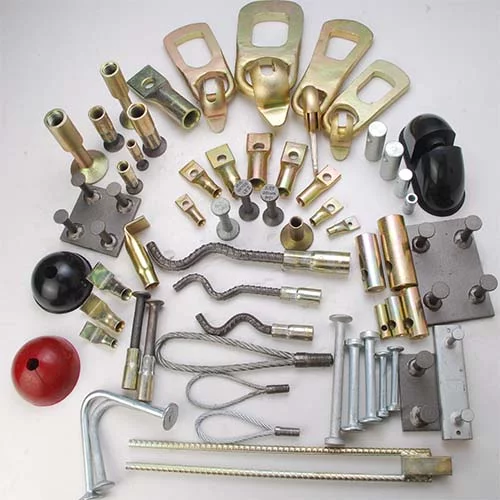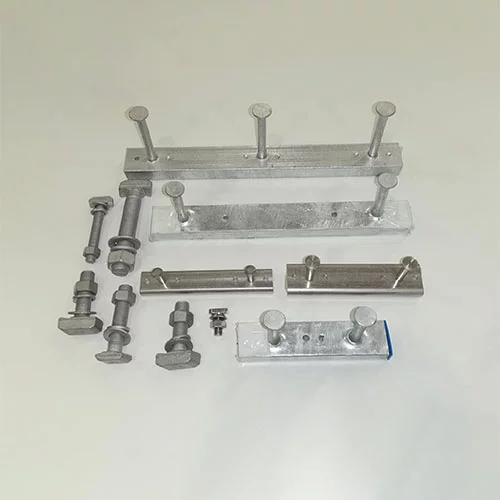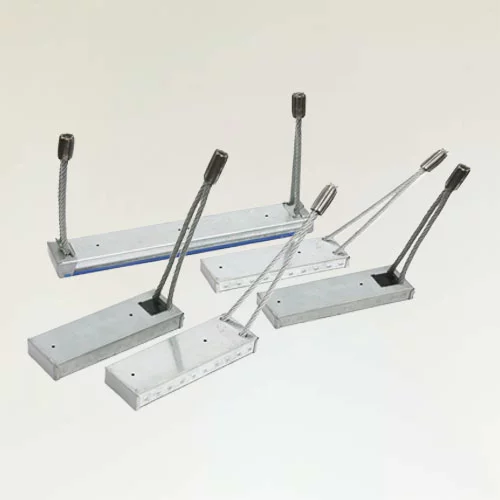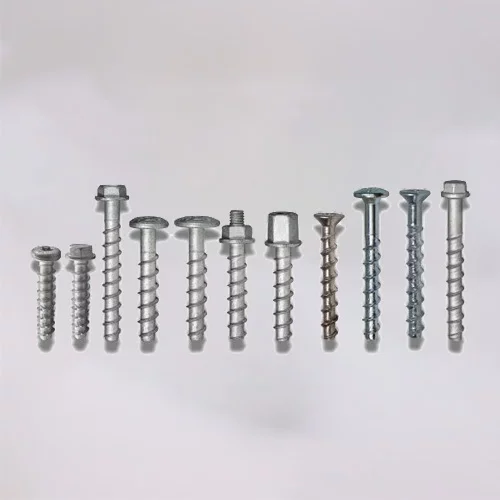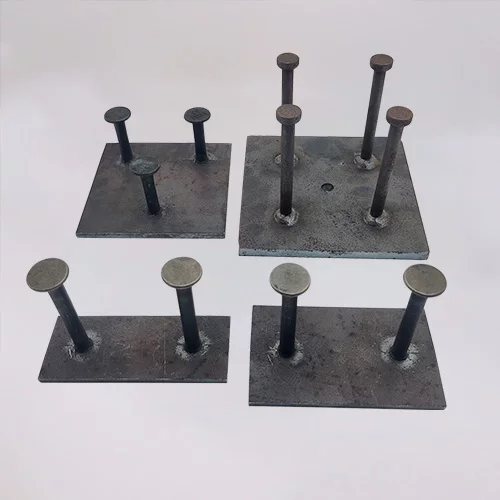Selecting the Optimal Steel Grade for Lifting Clutches: Q345D, Q355D, CM490, G30CrMoV, and Customization Options

In the realm of construction and precast concrete handling, lifting clutches are indispensable tools that ensure the safe and efficient movement of heavy components. The selection of appropriate materials for these clutches is paramount, as it directly influences their performance, durability, and safety. This article delves into the properties of various steel grades—Q345D, Q355D, CM490, and G30CrMoV—and explores customizable options, providing insights to aid in informed decision-making.
Understanding Lifting Clutches
Lifting clutches are mechanical devices designed to securely attach to precast concrete elements, facilitating their lifting and positioning during construction processes. These clutches must withstand substantial loads and harsh environmental conditions, necessitating materials that offer high strength, toughness, and resistance to wear and corrosion.
Basic Definition
Lifting Clutch: A mechanical device that securely grips precast anchors via a head and ear mechanism to lift concrete elements safely and efficiently
Lifting Ring Clutch: A ring-shaped assembly including a bail, clutch body, and curved bolt, designed specifically to engage spread anchors embedded in precast concrete
Design & Engagement
Lifting Clutch: Features forward-push ears that snap over spherical head anchors; removal via ear-retraction once the load is off
Ring Clutch: Slides over the anchor head, then locks by rotating a curved bolt through the anchor opening
Load Capacity & Safety Factor
Both types are rated by safe working loads; ring clutches typically use a 5:1 safety factor per industry standards
Specific capacity varies by model (e.g., 2–3 t, 4–6 t, 8–11 t) and material selection
Application Scope
Lifting Clutch: Versatile across construction, shipping, and manufacturing for varied lifting points
Ring Clutch: Primarily used in precast concrete panel handling for uniform load distribution
Operating Angle & Flexibility
Lifting Clutch: Handles up to 90° between handle and ears during lift
Ring Clutch: Recommended max 60° deviation from gravity to avoid shackle binding
Material & Construction
Both utilize high-strength steels (e.g., Q345D, Q355D, CM490, G30CrMoV) with protective surface treatments like galvanizing.
The Importance of Material Selection
The material composition of a lifting clutch significantly impacts its mechanical properties, including tensile strength, yield strength, and impact resistance. Selecting the appropriate material ensures that the clutch can handle the required loads without failure, maintains structural integrity over time, and complies with safety standards such as EN 1993 and ISO 9001.
Q345D
Q345D is a low-alloy structural steel characterized by a minimum yield strength of 345 MPa and tensile strength ranging from 470 to 630 MPa.
Its chemical composition (max% %) includes C 0.18, Si 0.55, Mn 1.60, P 0.030, S 0.030, V 0.15, Nb 0.06, Ti 0.20, and Al ≥ 0.015. Q345D also undergoes Charpy V-notch impact tests at –20 °C, demonstrating a minimum absorbed energy of 34 J for thicknesses up to 150 mm. This grade offers an excellent weldability–toughness balance, making it ideal for standard-duty lifting clutches.
Q355D
An upgrade from Q345D, Q355D provides higher strength (yield ≥ 355 MPa) and similar tensile strength (450–600 MPa) with improved low-temperature toughness. The hot-rolled Q355D variant limits carbon to ≤ 0.20 % and phosphorus to ≤ 0.025 %, enhancing weld quality and reducing segregation. Q355D’s superior performance in subzero environments makes it suited for cold-climate precast applications.
CM490
CM490 is a high-strength chain steel grade used in marine anchor chains and dynamic load applications. Although primarily specified under GB/T 18669, typical CM490 exhibits a yield strength around 490 MPa and tensile strength near 650 MPa, with elongation ≥ 17 % and impact energy ≥ 60 J at 0 °C . CM490 steel is noted for medium intensity, high cold-deformation plasticity, and acceptable weldability and machinability, although care is needed to mitigate temper brittleness during heat treatment.
G30CrMoV
G30CrMoV alloy steel delivers exceptional fatigue resistance and wear properties, with Rp0.2 (0.2 % offset yield strength) ≥ 350 MPa and tensile strength between 650 and 1 100 MPa. It also achieves elongation > 12 % and Charpy impact energy > 20 J at room temperature. The addition of Cr, Mo, and V refines grain structure and enhances hardenability, making G30CrMoV optimal for high-cycle lifting systems.
Customizable Alloys
For specialized projects, fully customizable alloys allow engineers to tailor corrosion resistance, hardness, and toughness via controlled chemistry, heat treatment, and surface processing (e.g., zinc plating, black oxide, powder coating). HULK Metal’s in-house metallurgical lab can develop bespoke formulations—such as Ni-Cr-Mo steels for marine environments—backed by rigorous mechanical and nondestructive testing.
Comparative Analysis
Material | Yield Strength (MPa) | Tensile Strength (MPa) | Elongation (%) | Impact Energy (J) | Key Benefits |
Q345D | 345 | 470 – 630 | ≥ 22 | ≥ 34 (–20 °C) | Excellent weldability, low-temp toughness |
Q355D | 355 | 450 – 600 | ≥ 21 | ≥ 34 (–20 °C) | Enhanced strength, cold-climate performance |
CM490 | ~ 490 | ~ 650 | ≥ 17 | ≥ 60 (0 °C) | High dynamic load resistance, plasticity |
G30CrMoV | ≥ 350 | 650 – 1 100 | ≥ 12 | ≥ 20 | Superior fatigue life, wear resistance |
Custom Alloys | Variable | Variable | Variable | Variable | Tailored to exact project requirements |
Key Selection Criteria
Load and Fatigue Requirements
Choose a material whose yield and fatigue strengths exceed service loads with an appropriate safety factor (typically > 1.5 for lifting equipment).
Environmental Factors
Account for temperature extremes, corrosion potential, and exposure to salts or chemicals. Low-temperature toughness (Charpy V-notch) is critical for cold regions.
Regulatory and Certification Standards
Materials must comply with EN 1993 for structural steel and be produced in ISO 9001-certified facilities to ensure traceability and consistent quality.
Manufacturing Considerations
Evaluate weldability (carbon equivalent), machinability, availability, and cost. Steel grades with lower carbon equivalents (CEV ≤ 0.45) reduce preheat requirements.
Surface Treatments
Surface finishes—galvanizing, powder coating, passivation—extend service life. Ensure compatibility between substrate chemistry and coating processes.
Quality Assurance & Certifications
Adherence to ISO 9001 quality management systems guarantees rigorous documentation, process control, and continuous improvement. Additionally, third-party inspections (e.g., SGS, TÜV) and CE marking confirm compliance with European machinery and lifting equipment directives.
Why HULK Metal?
HULK Metal distinguishes itself through:
Extensive Material Portfolio: From common HSLA steels to high-end alloys and fully customized metallurgical solutions.
ISO 9001 Certified Facility: With formal QMS, in-process audits, and traceable mill certificates.
Advanced Testing Capabilities: Charpy impact, tensile, hardness, NDT (ultrasonic, magnetic particle), and spectral analysis ensure every batch meets spec.
Flexible OEM Services: Rapid prototyping, toolmaking, and adjustable heat treatment deliver tight lead times.
Global Supply Chain & Support: Coordinated logistics, field technical assistance, and post-sales service guarantee uptime and reliability.
Selecting the right material for lifting clutches is a complex decision that balances mechanical performance, environmental resilience, regulatory compliance, and cost. Understanding the nuances of Q345D, Q355D, CM490, G30CrMoV, and custom alloys empowers engineers and procurement specialists to optimize safety and efficiency. Partnering with HULK Metal ensures access to top-quality materials, rigorous testing, and tailored solutions—contact us today to discuss your next project and secure the perfect lifting clutch material for your application.
Article Navigation
PRECAST CONCRETE ACCESSORIES
Other Precast Concrete Accessories You Might Want to Know
You can click to learn more about HULK Metal precast concrete accessories such as lifting anchors, precast sockets, spread anchors, shuttering magnets, cast-in channels, wire loop boxes, and other precast concrete accessories you might want to know.
